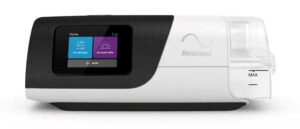A few years ago, I wrote a post entitled Why Sleep Matters while drawing attention to the fact that 40% of Americans do not get the recommended 7 minimum hours of sleep per night. As noted, sleep plays a critical role in physical regeneration, memory consolidation, emotional regulation, and longevity. When falling short on restorative sleep, we have difficulty sustaining alertness, absorbing new information, and thinking clearly when making decisions. And given slower reaction times, driving while sleepy can be as dangerous as driving alcohol-impaired.
If we’ve struggled with sleep or found occasion to pull an all-nighter, we’ve experienced what’s it’s like to operate at less than full capacity. Yet it’s easy to brush it off under the guise of simply powering through. After all, we’re made of tough stuff! But we may well pay a hefty price in later life for the bad habits we instill today.
Recognizing the importance of our brains to sustain all manner of physiological function, our bodies have been designed to protect them from unwanted or harmful substances in the blood. A blood-brain barrier allows passage of small molecules by passive diffusion and selective transport of nutrients, ions, organic atoms, and macromolecules (e.g., glucose, amino acids) crucial to neural function. While it’s clearly beneficial to filter out toxins from fluids entering the brain, the question remains: How does the brain get rid of its waste material?
In 2012, scientists discovered a transport system that provides the means to remove the brain’s waste products. Dubbed the glymphatic system, these fluid-filled tunnels collect unwanted materials and “milk” them via pressure variances associated with arterial heartbeats into the cerebral spinal fluid surrounding the brain. This pulsating mechanism does most of its work at night with the greatest activity during slow wave sleep (SWS). These tunnels clamp down when we’re awake, reducing glymphatic flow by 90%.
As discussed in an earlier post, sleep consists of a five-stage cycle that takes 80-120 minutes and repeats 4-6 times per night. We need the experience of all five stages to be mentally and physically restored upon awakening to start a new day. We now know that it’s also an imperative to eliminate potentially neurotoxic waste products like amyloid-beta which is implicated in Alzheimer’s disease. Perhaps that’s why folks who consistently get less than 7 hours of sleep per night are at greater risk of cognitive disorders.
Glymphatic brain filtration declines with age. Tests on old mice show that they have 10-20% the filtration capacity of young mice. Older adults enjoy about half the slow wave sleep of young adults, and age-related arterial thickening reduces the pulsation that drives the glymphatic pump. As such, we need to take steps to counteract these physiological deficits if we wish to maintain good cognitive health.
Roughly 1 in 10 individuals globally and up to 30% of the elderly experience sleep apnea. This disorder causes repetitive pauses in breathing, periods of shallow breathing, and/or collapses of the upper airway during sleep which results in sleep disruption. A positive diagnosis of sleep apnea attends to persons with 5 or more events per hour. Beyond the deleterious effects of daytime sleepiness, the afflicted likely sustain an above-average accumulation of brain toxins… and that can’t be good!
A continuous positive airway pressure (CPAP) device helps keep the airway open and significantly reduces disruptive events during sleep. My husband’s device sits on the nightstand and connects to a facial mask via a flexible tube. The first few nights of usage were a bit rocky while he became acclimated to air pressure and the mechanics of working the system. But he now enjoys a precipitous drop in wakeful events and the attendant boost in sleep quality and daytime energy.
For those with or without sleep apnea, sleeping on one’s side allows for improved glymphatic transport. For those used to sleeping on one’s back or front, positional training is possible though use of night shirts that have tennis balls affixed to the front and/or back.
Of course, simply getting enough quality sleep matters greatly. I’ve summarized evidence-based tips in How to Prepare for a Good Night’s Sleep.

